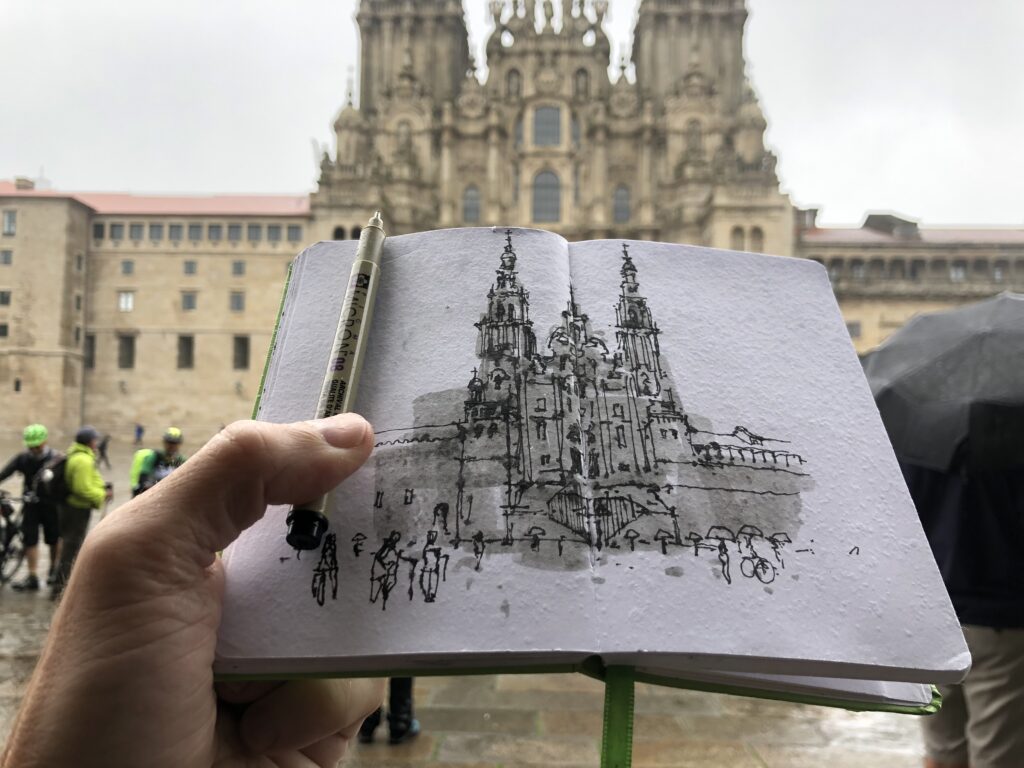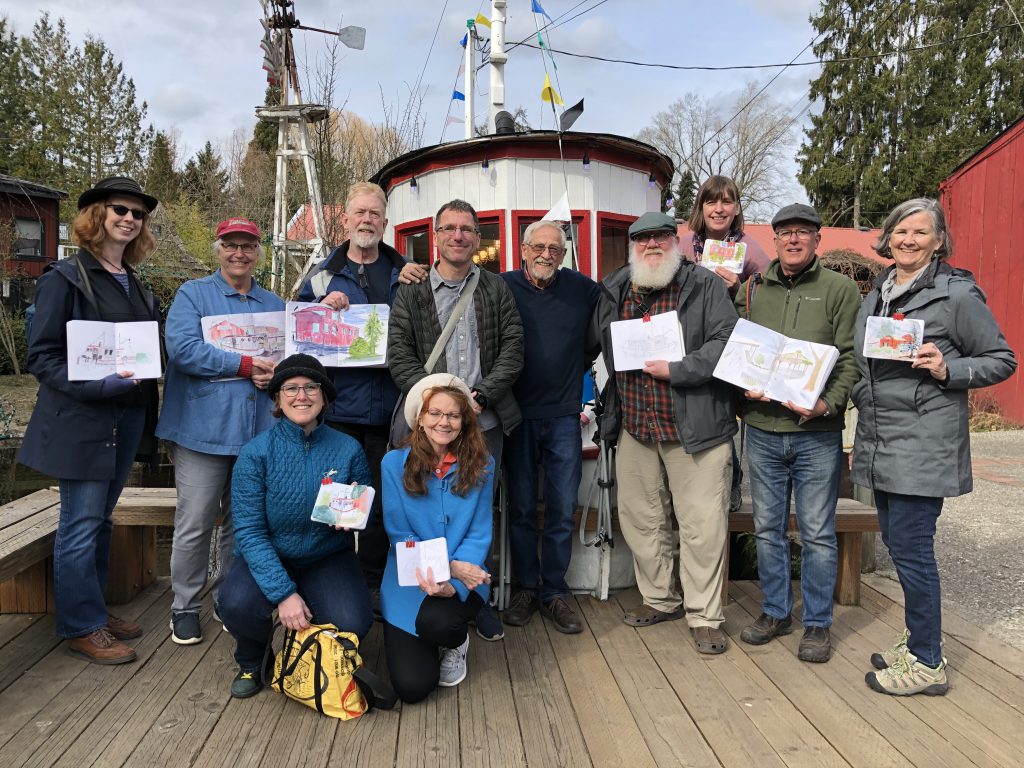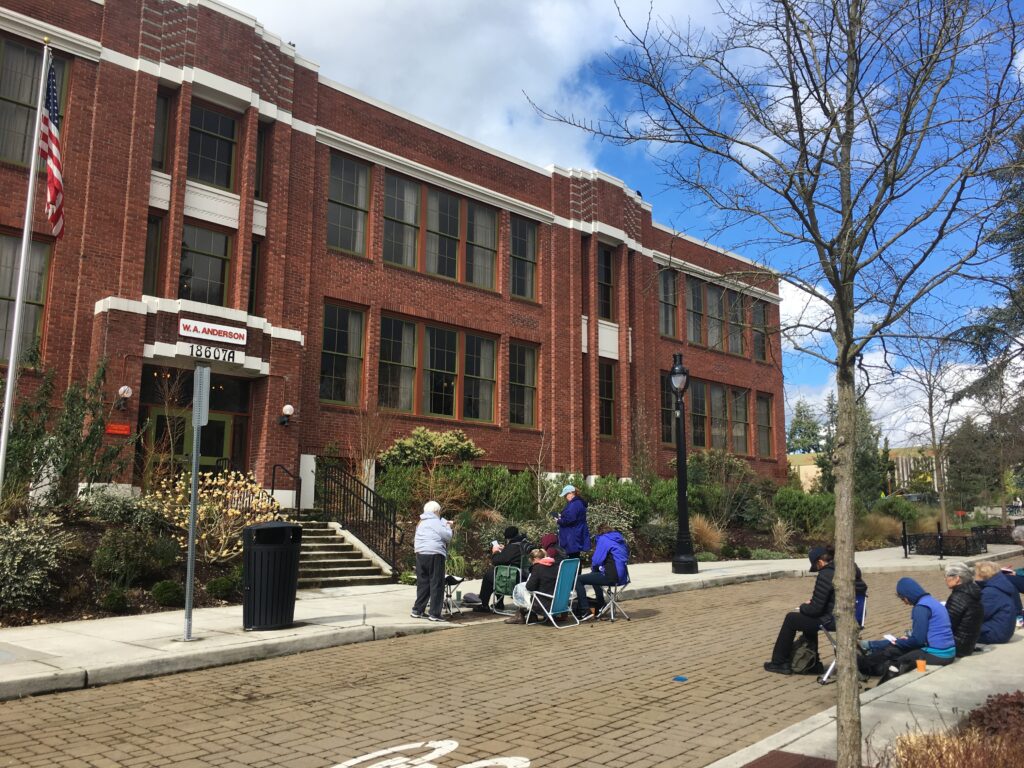
A weekend-long sketching class in a walkable urban setting with an interesting mix of architecture, history and nature. That’s the basic idea behind the workshop I have started teaching in Bothell, Washington, a charming little river town 15 miles north of Seattle.
It is hosted by Cloud 9, an all-ages art school run by super-organized and talented local artist Charlene Freeman. The school sits in the heart of Bothell’s downtown, within walking distance to great sketching spots along Main Street, and city landmarks such as the historic Anderson School building and Bothell Landing Park on the banks of the Sammamish River.
Here’s a map that I prepared to get participants oriented:
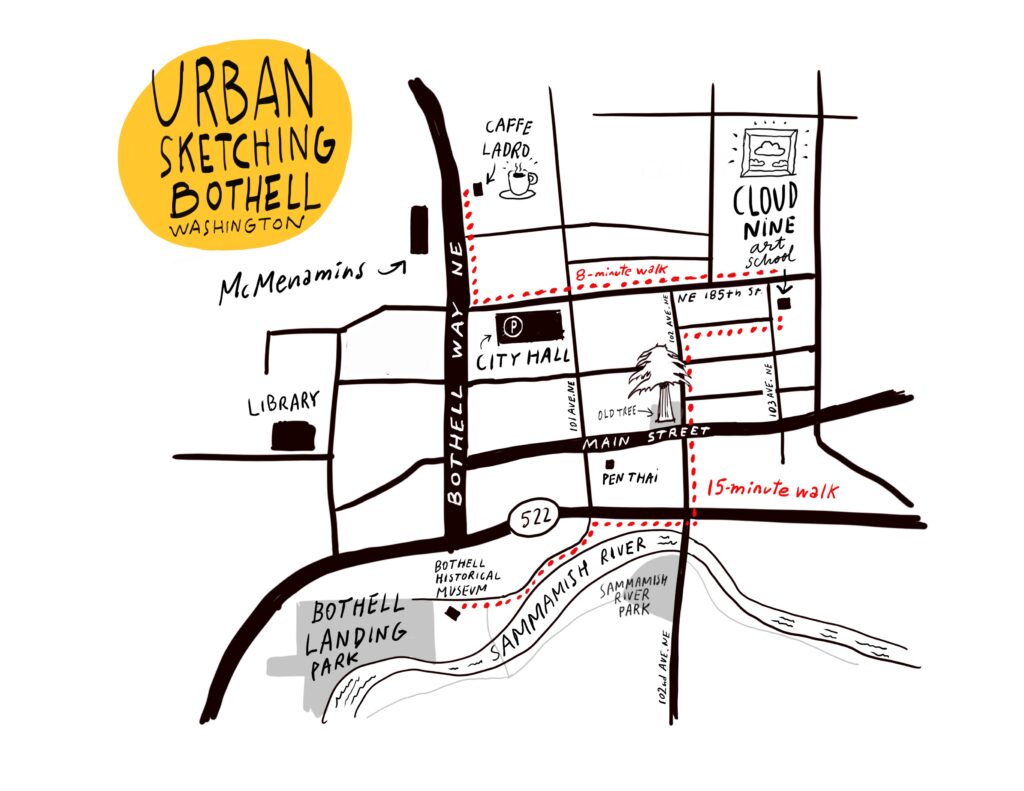
The first edition of the workshop, which took place March 22 to 25, kicked off Friday evening with a brief introduction about urban sketching and a presentation about the town’s history by members of the Bothell Historical Society. We learned about the centenarian tree on Main Street that has survived several fires and is decorated with Christmas lights every year, and about the bridge where the mayor was caught driving faster than the 10 mile-per-hour speed limit he had set himself back in the early 1900s. Dinner at a restaurant on Main Street followed for those participants interested, and by the time Friday was over, everyone seemed excited for our weekend of sketching and exploration around town. I know I was!
Over Saturday and Sunday, through indoor and outdoor demonstrations and exercises, I covered three key aspects to make successful sketches from observation: composition, tone and color.
The segment about composition started with a demo on sight measuring, an often-forgotten skill that is essential to create accurate drawings. Sight measuring is a step you may later skip in favor of simple eyeballing or more creative approaches to composition, but it is important to learn it!
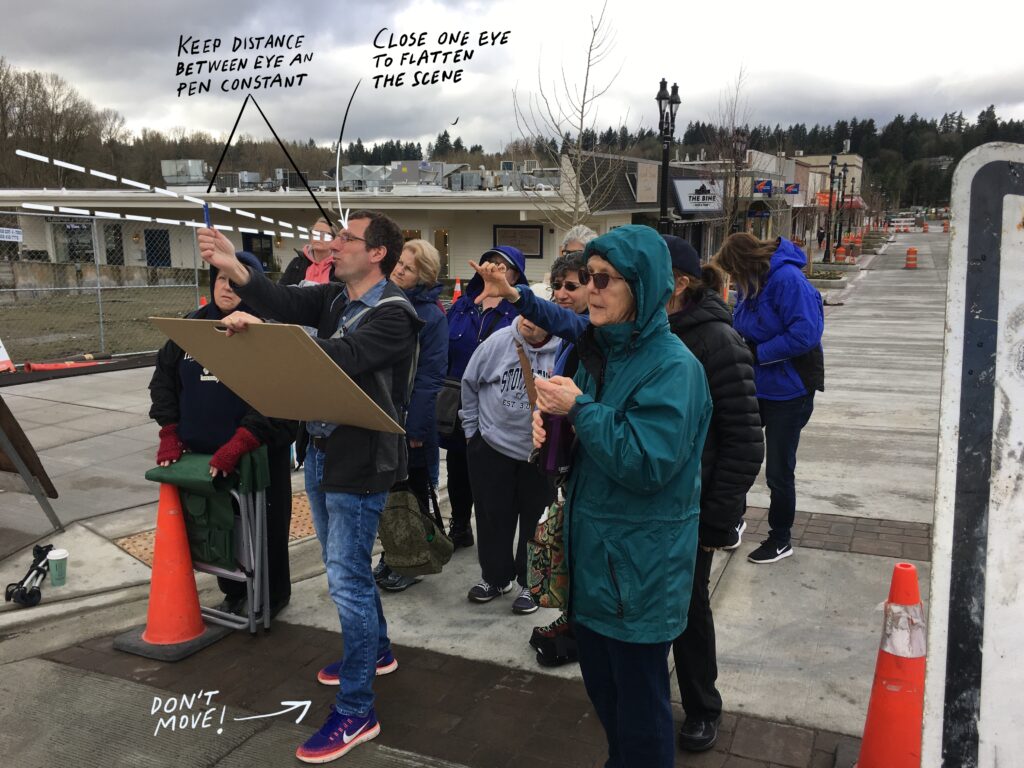
Proper sight measuring ensures that the desired scene will fit on the page. Another helpful step to compose a drawing is creating thumbnail sketches beforehand (on the margins of your page or on a separate notebook). Here are some examples from my demo in front of the Anderson School, which is now a McMenamins hotel.
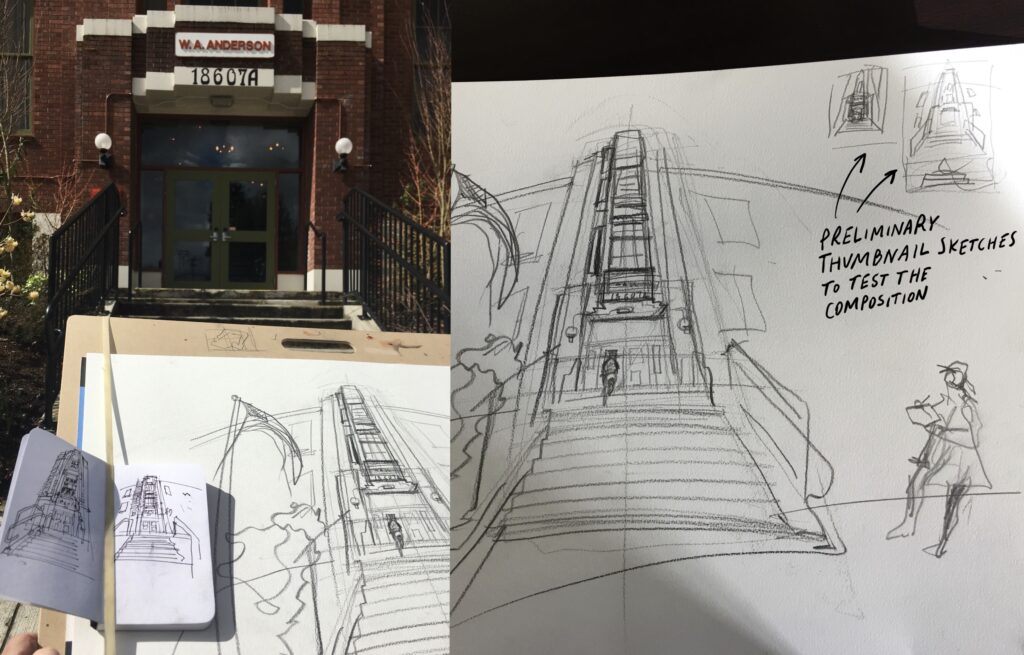
Once you get the grasp of measuring distances and transferring angles from the scene to the page, you are equipped to fit any kind of scene, not matter how big, into any size of canvas. Below is an example I demonstrated on my pocket Stillman and Birn sketchbook. It shows a wide angle of Main Street and the historic tree that has stood in this intersection for more than one hundred years!
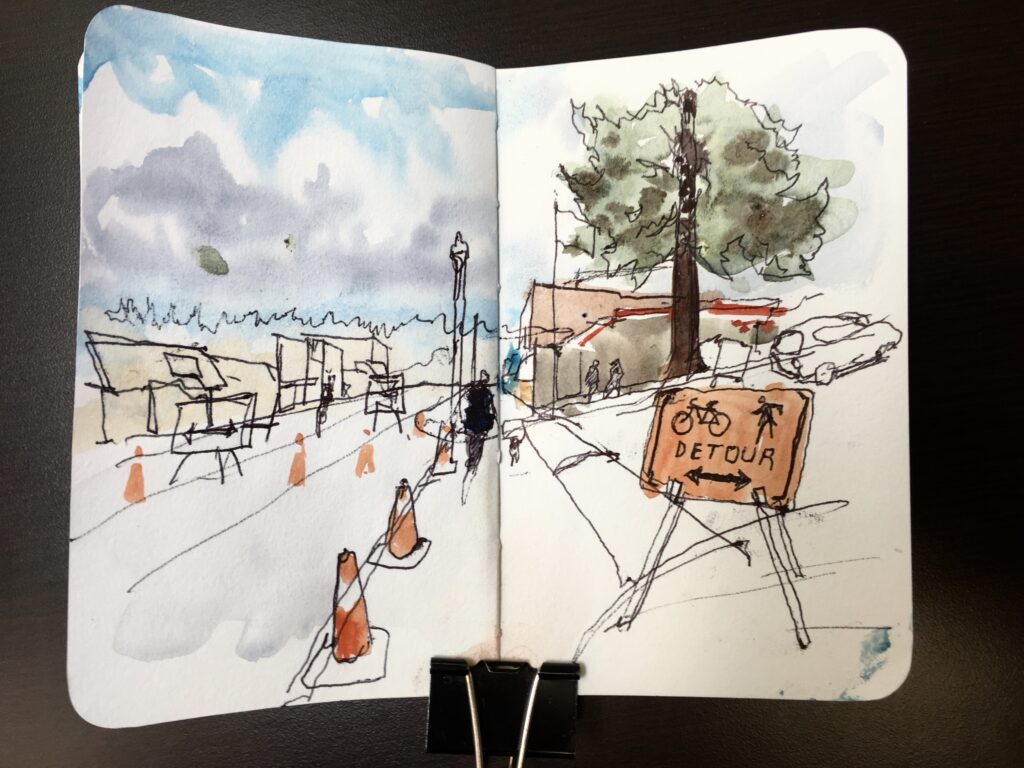
While I drew the sketch, I gave participants some tips to draw standing up such as holding your sketchbook as upright as possible; locking your feet on your ground in a comfortable position; and keeping your head still while your eyes scan the scene. I love sketching standing up because it forces me to draw faster.
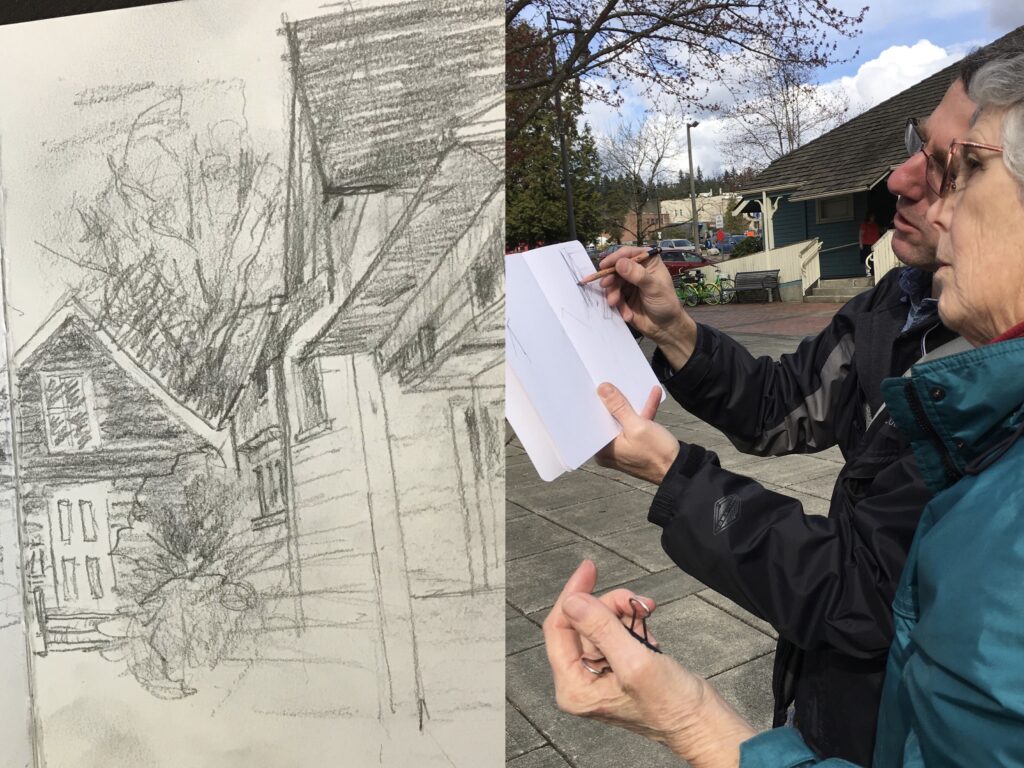
Following the workshop segment about composition, we moved on to make value sketches. My demonstration helped participants identify light, dark and every shade of gray in between when examining a scene.
The sun came out just at the right moment to provide good source of lighting as we practiced the useful “artist squint.” Bothell’s first schoolhouse building, which dates from 1885, and a log cabin from early European settlers, both located at Bothell Landing Park, served as the subject for this exercise.
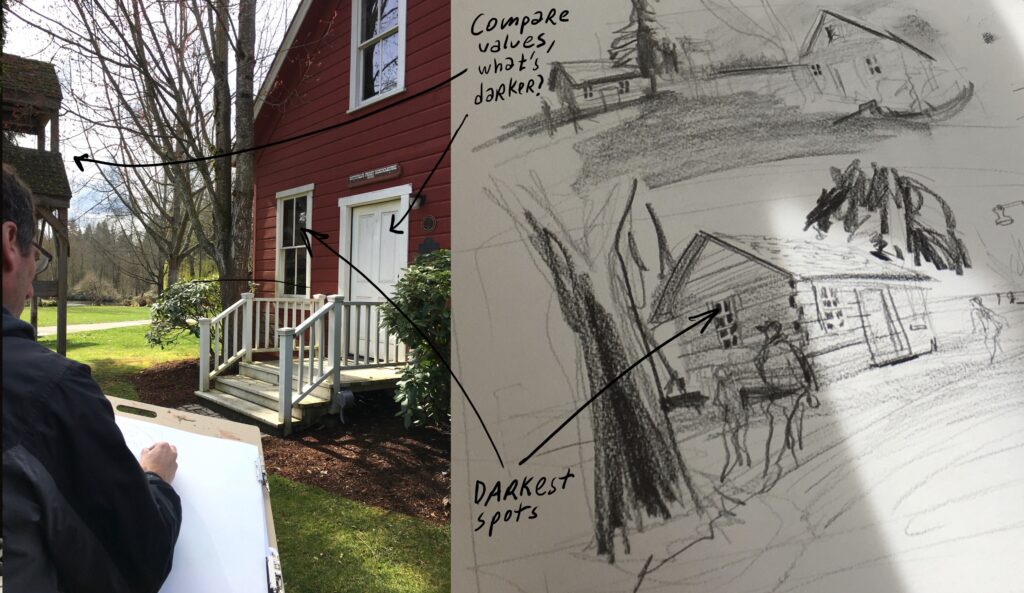
I began the watercolor part of the workshop with an indoor demo inside Cloud 9. A lot can be gained by practicing watercolor technique indoors before using it out and about. I showed how to mix water and pigment to create light, medium and dark values. I also demonstrated wet-on-wet and wet-on-dry techniques, and how to use them to create sharp or soft edges. The sketch of a walkway with red railing you see in the photo to the right below is one of several originals I brought to the class as examples.
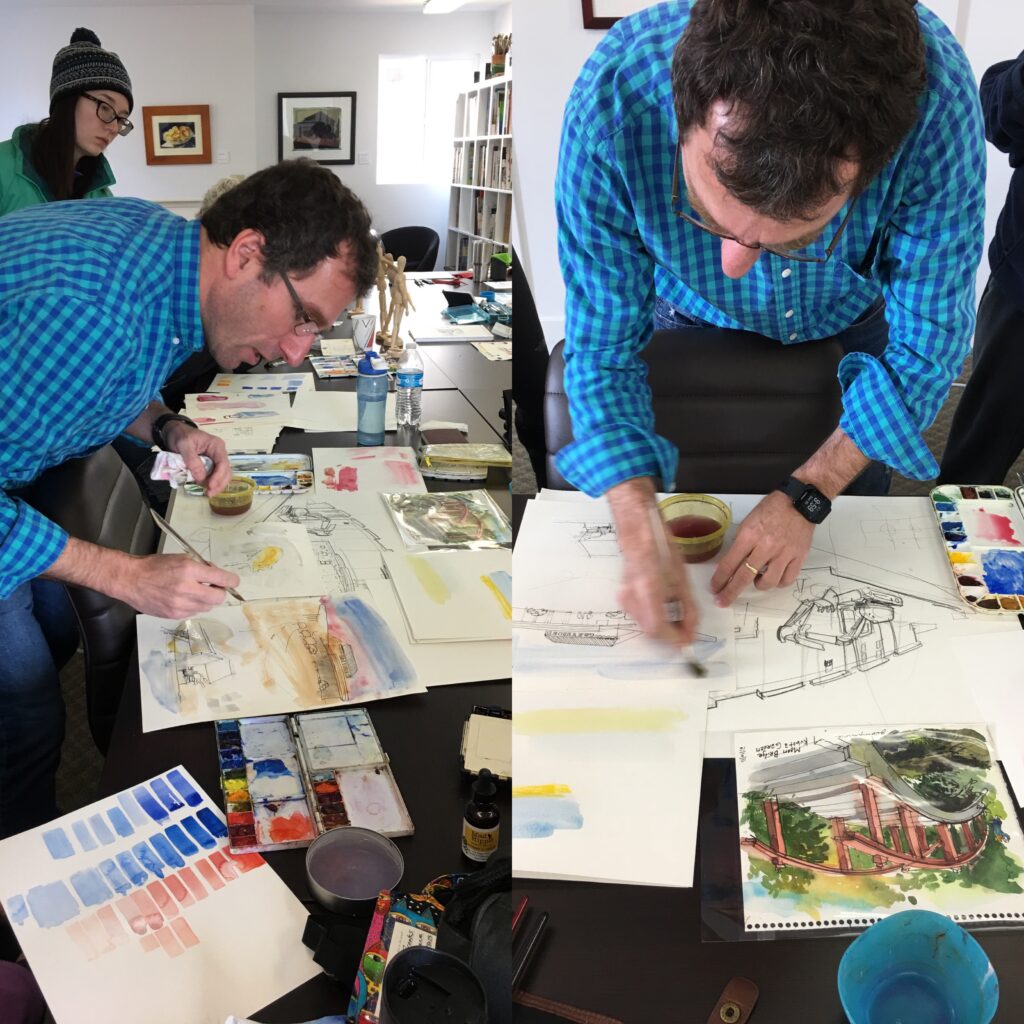
For all my outdoor demos, I used a large drawing board and 18” x 24” sheets so everyone could see my process.
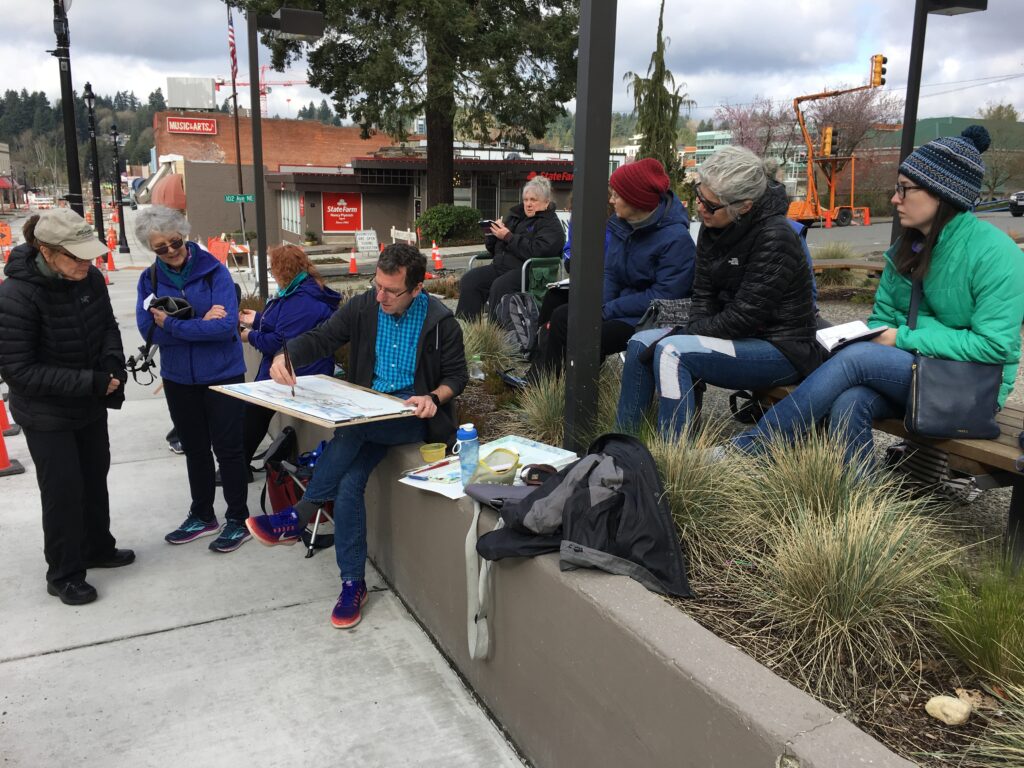
Here’s the result of the outdoors watercolor demo. The annotations point to things I discussed as I was working on the sketch.
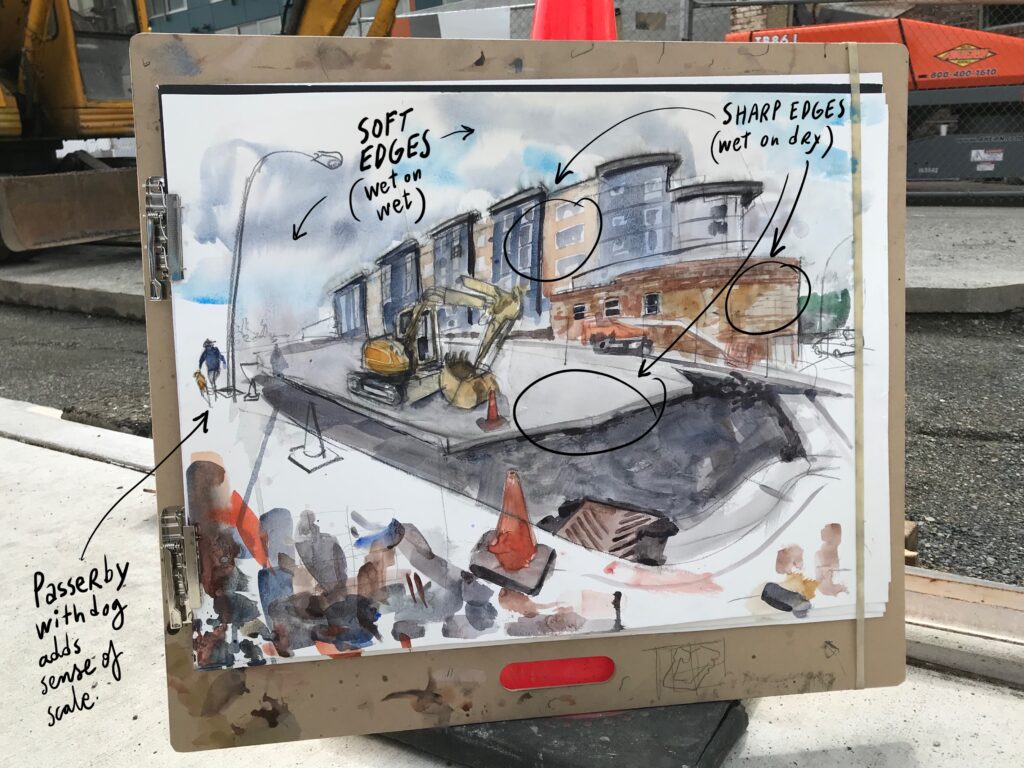
Because urban sketching implies the intent of learning more about the towns where we live and the world at large, I wanted to make sure participants would get to learn about Bothell and its history. That brick building on my watercolor sketch is the old Mercantile building dating from the early 1900s. It was recently gutted by a fire but its walls are being preserved and incorporated into a six-story multi family development currently under construction.
And we didn’t just learn about the city’s past, we also stepped right into it! Local author and historian Margaret Turcott, a board member of the Bothell Historical Society, treated us to a private tour of the William Hannan house, a 1893 Victorian residence that is home to the society’s museum. Every room has been restored and furnished with turn-of-the century items that we delighted in sketching during our visit. Here are some photos:
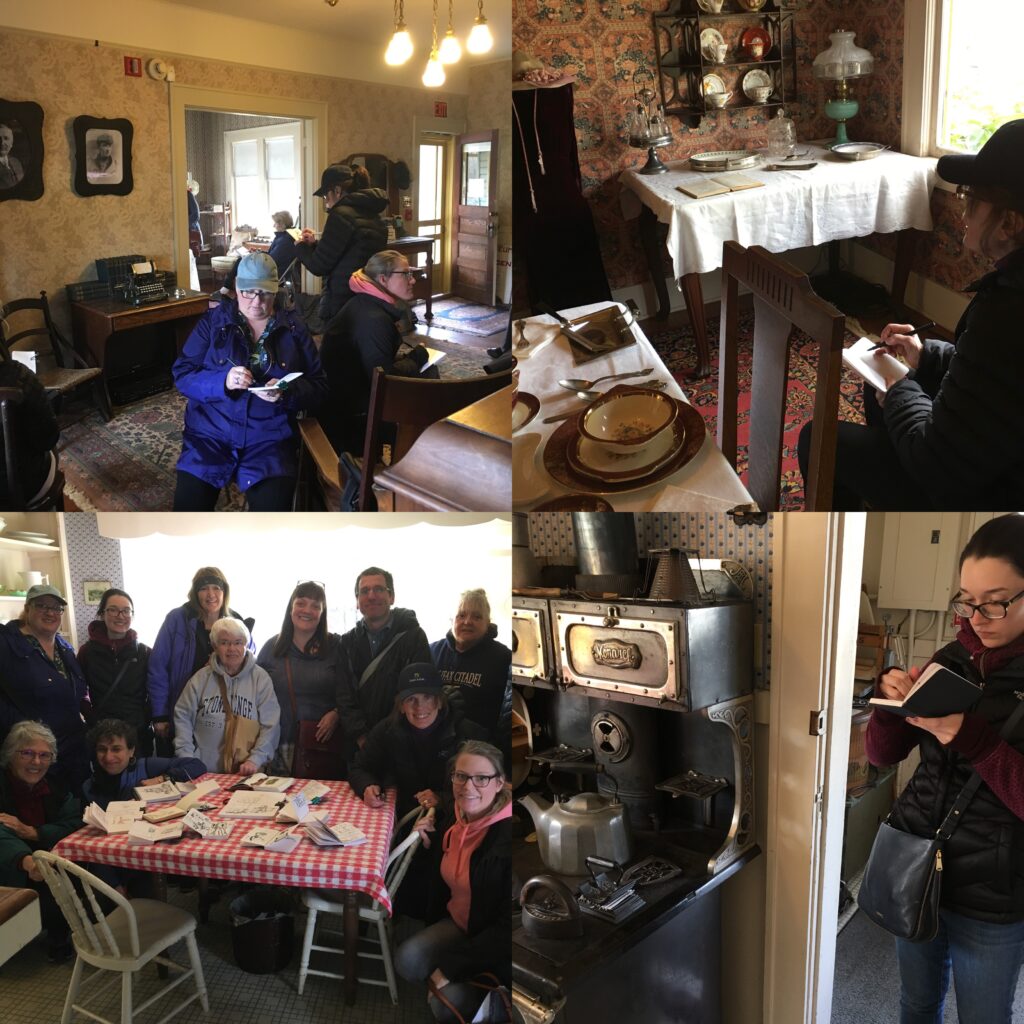
We capped the weekend with a sketchwalk open to local sketchers at Bothell Country Village, a charming outdoor mall fashioned in the style of an old western town. Here’s the final group photo and some snapshots of sketches participants made throughout the weekend.
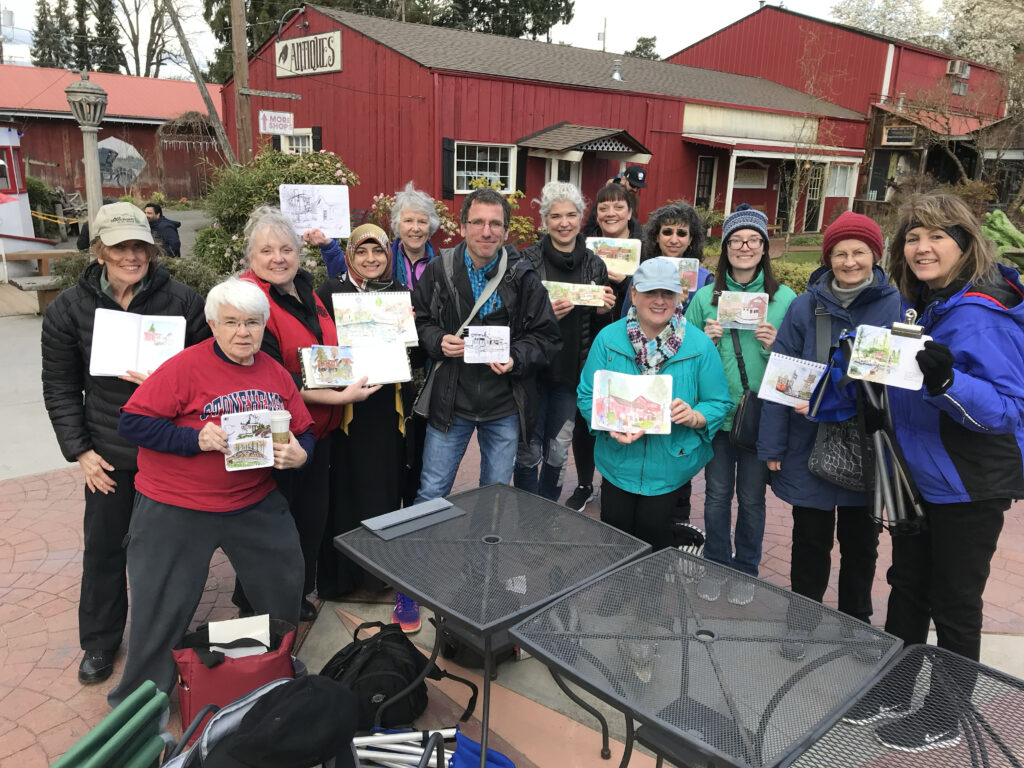
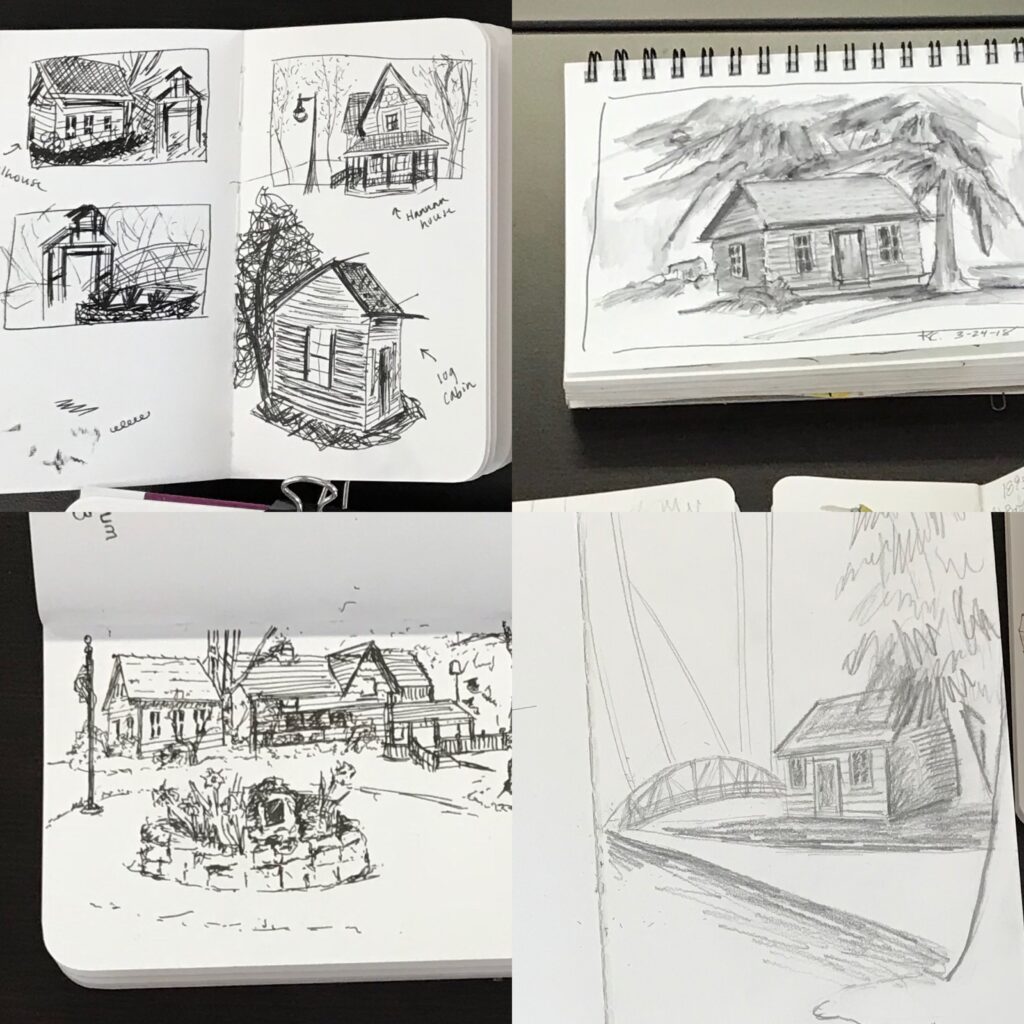
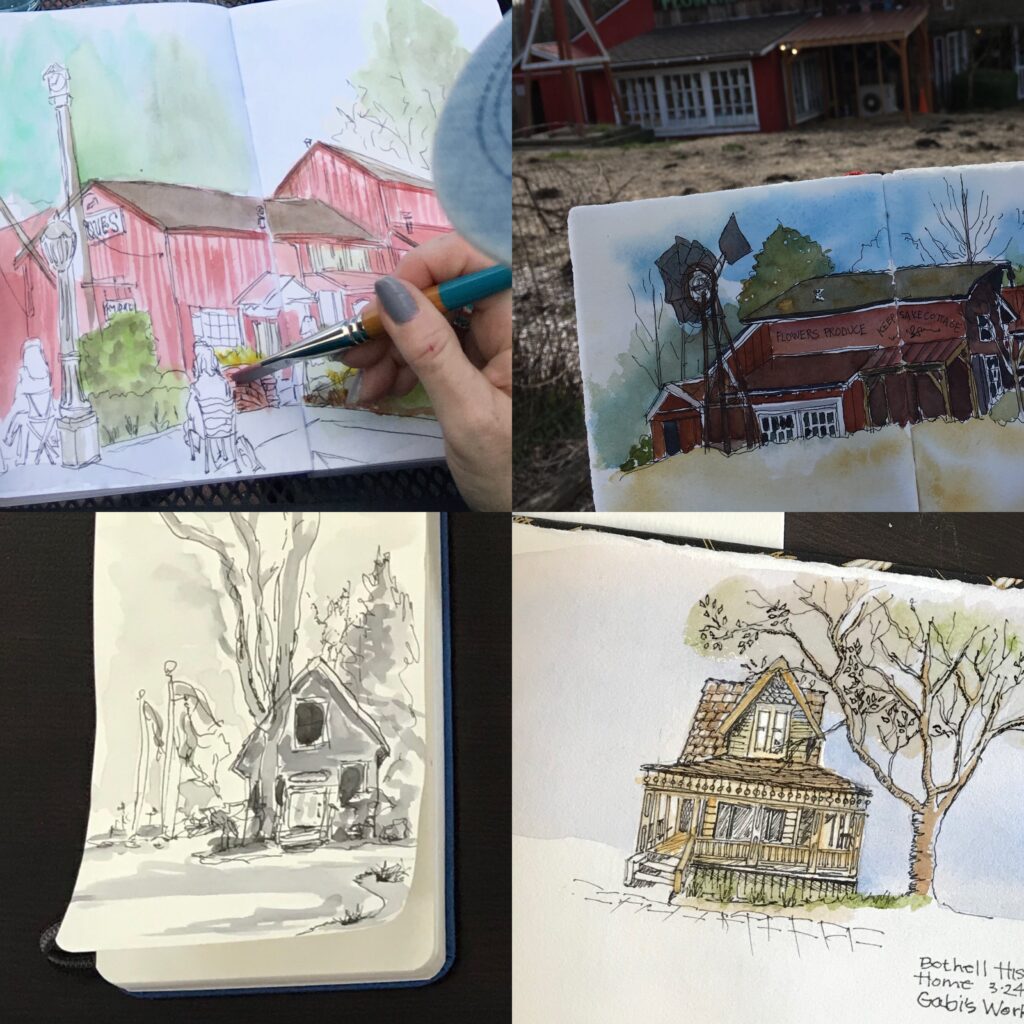
Big thanks to everyone who made this workshop possible, especially Cloud 9 owner Charlene Freeman, Bothell Historical Society volunteers Margaret Turcott and Pat Pierce, and Michael Kalman, of Stillman & Birn, who provided two complimentary sketchbooks to each participant.
A percentage of this workshop’s revenue is donated to the Urban Sketchers nonprofit to support its mission of raising the artistic, educational and storytelling value of on-location sketching.
I had a blast teaching this class and I’m looking forward to meeting everyone who has already signed up for the summer edition June 22-24. To learn about my upcoming workshops at Cloud 9 and elsewhere, make sure you have signed up to my mailing list and follow me on Facebook and Instagram.
